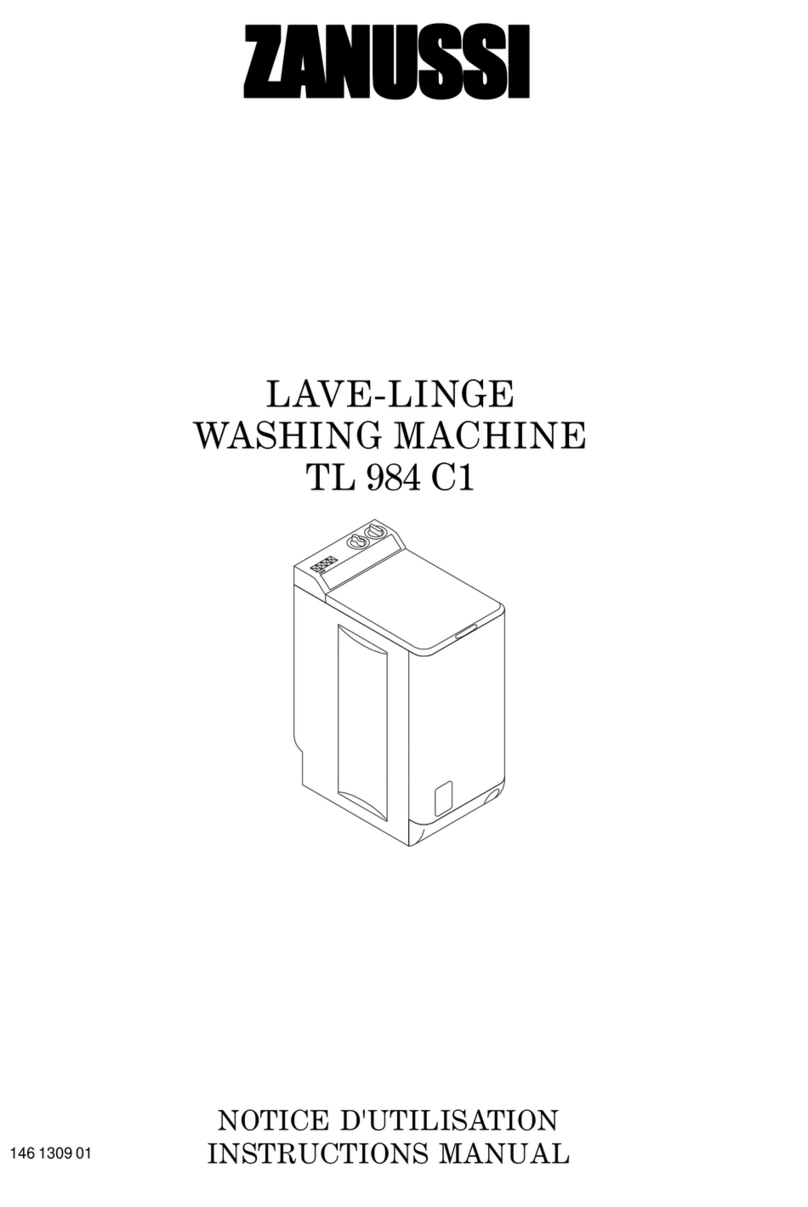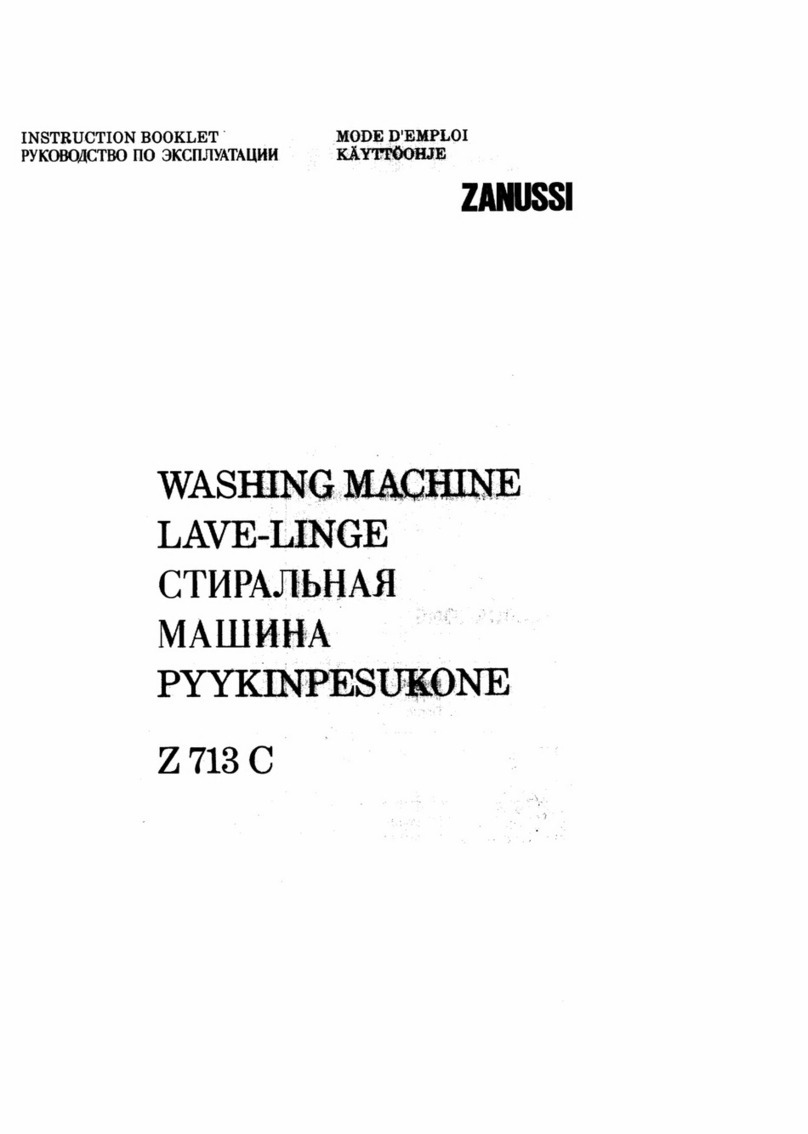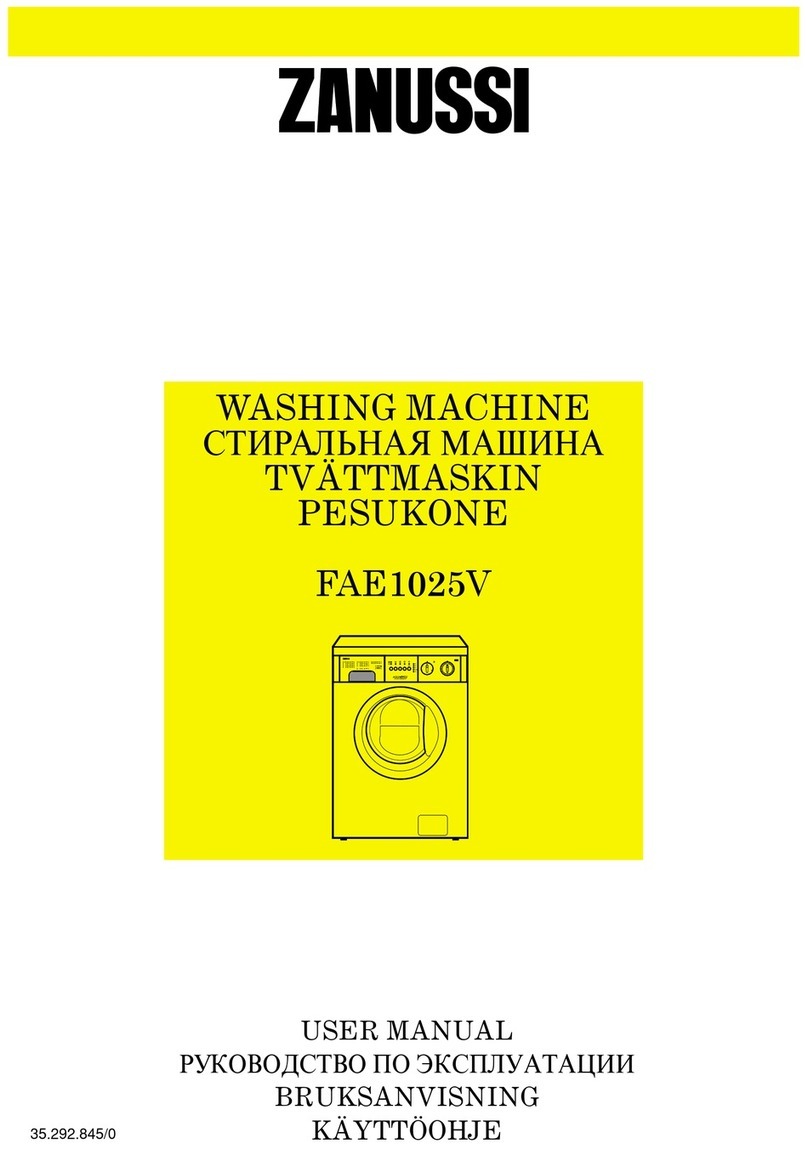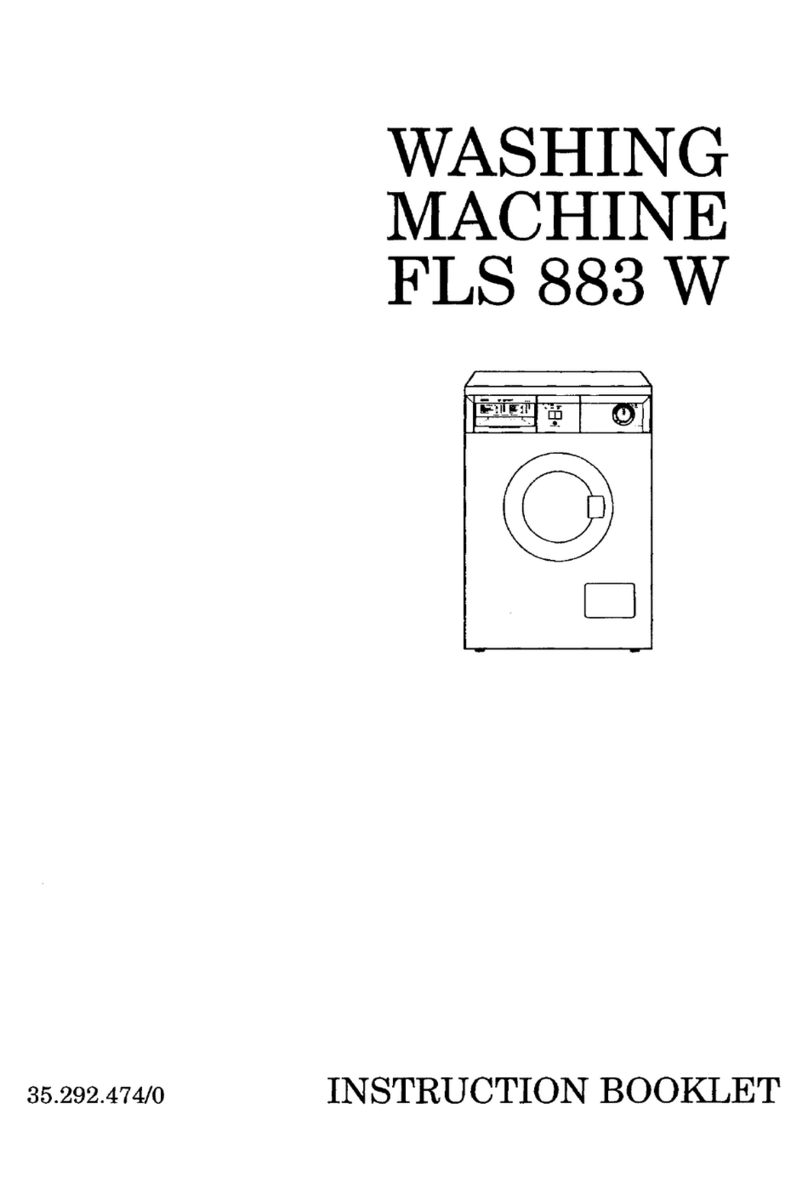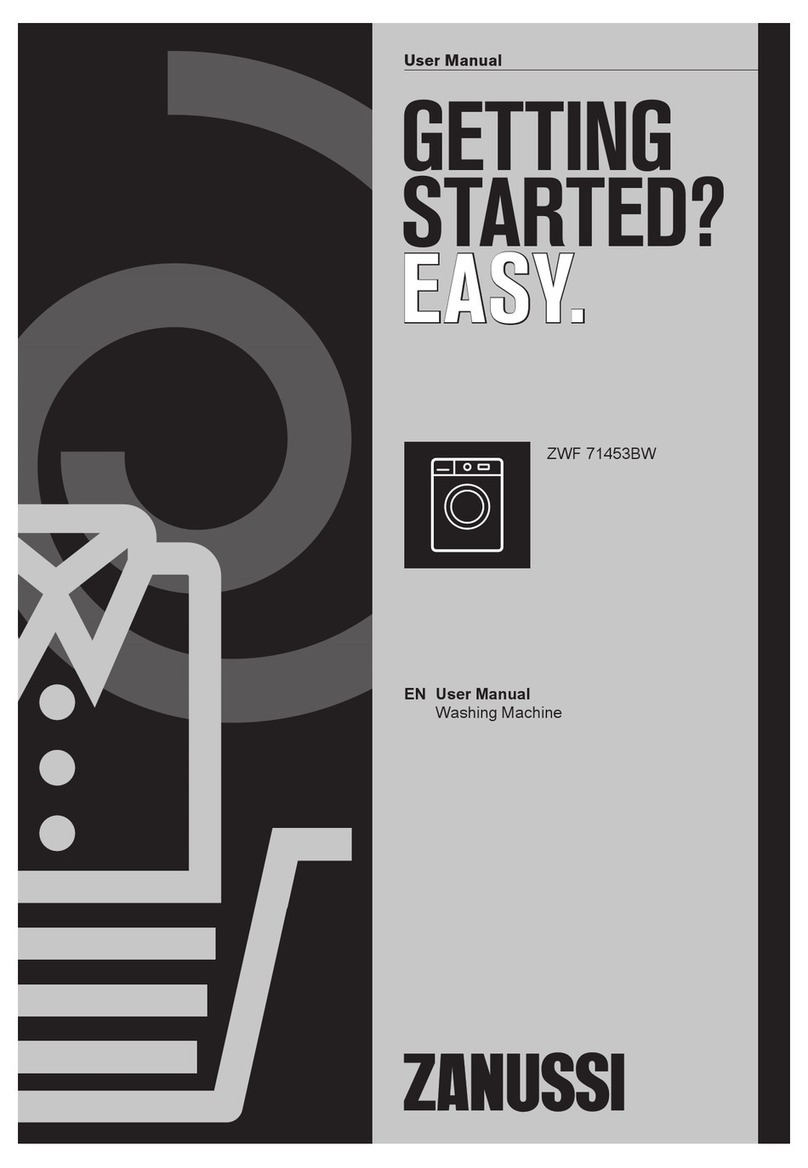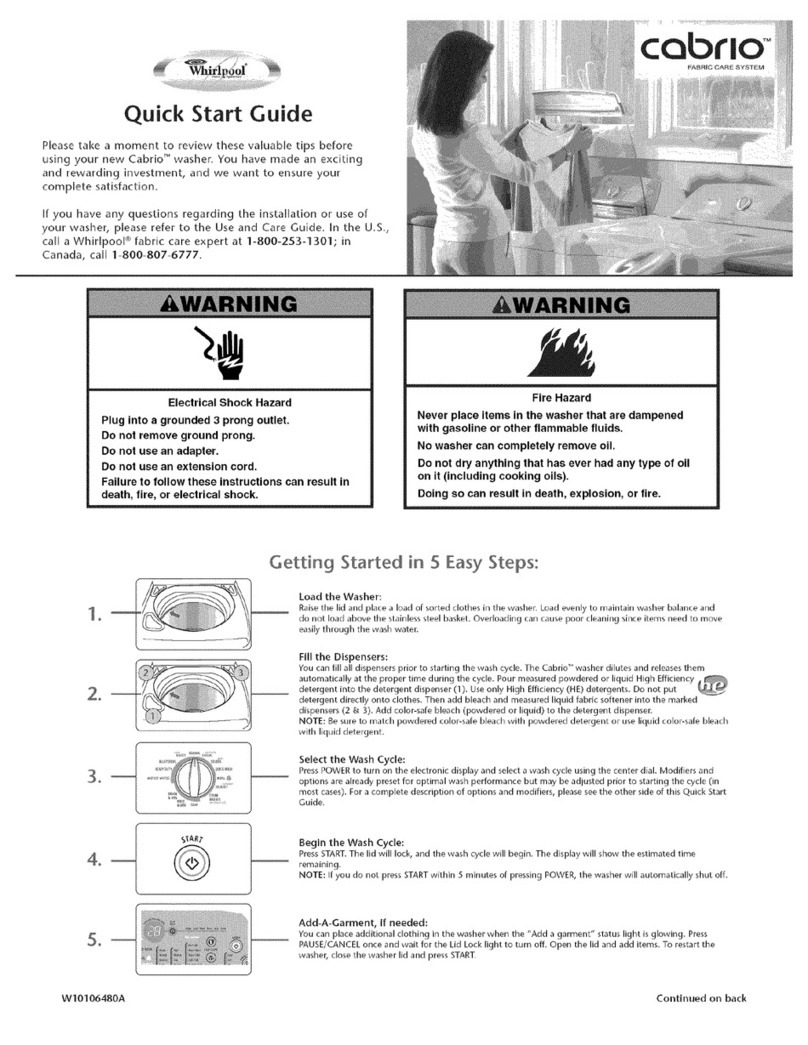- 3 -
Youmustreadthewholeofthisinstructionbookbefore
you use the appliance. Follow the advice carefully.
Keep the book for future reference. If you sell or give
awaytheappliance,makesurethatthebookispassed
to the new owner.
The following warnings are provided in the interest of
overallsafety.Youmustreadthembeforetheappliance
is installed or used.
Use
This appliance is designed to be used by
adults. Children should not be allowed to touch
the controls or play with the product.
It is dangerous to modify the specifications of
this appliance in any way.
Always unplug the appliance and turn off the
water after use.
Only wash fabrics with are designed to be
machine washed. If in doubt, follow the instruc-
tions you find on the label of the item itself.
Place small metal rings or edged plastic rings
in a net or bag.
Make sure that all pockets are empty. Hard,
sharp objects such as coins, safety pins, nails,
screws or stones can cause extensive damage.
Do not machine wash fabrics which are
saturated with petroleum products. If volatile
cleaning fluids have been used, make sure
that they are thoroughly removed from the
fabrics before they are placed in the appliance.
Small and delicate objects (e.g. baby socks,
stockings) can be easily washed inside a small
pillowcase with a zip fastener or in larger
socks.
Use only the recommended quantities of fabric
conditioner.
Before cleaning, care and maintenance, ensure
that the machine is unplugged.
Installation
Any electrical work required to install this
appliance should be carried out by a qualified
electrician or competent person.
Any plumbing work required to install this
appliance should be carried out by a qualified
plumber or competent person.
Make sure that the appliance does not stand
on its electrical supply cable.
This appliance is heavy. Care should be taken
when moving it.
All packaging and transit bolts must be removed
before the appliance is used. Serious damage
may occur if this is not done.
If your washing machine is in a room subject to
temperatures below freezing, the water must
be removed from the machine. So, the
danger of freezing should be expected.
SAFETY INSTRUCTIONS
Read all instructions before using
the appliance and save them for
future reference.
